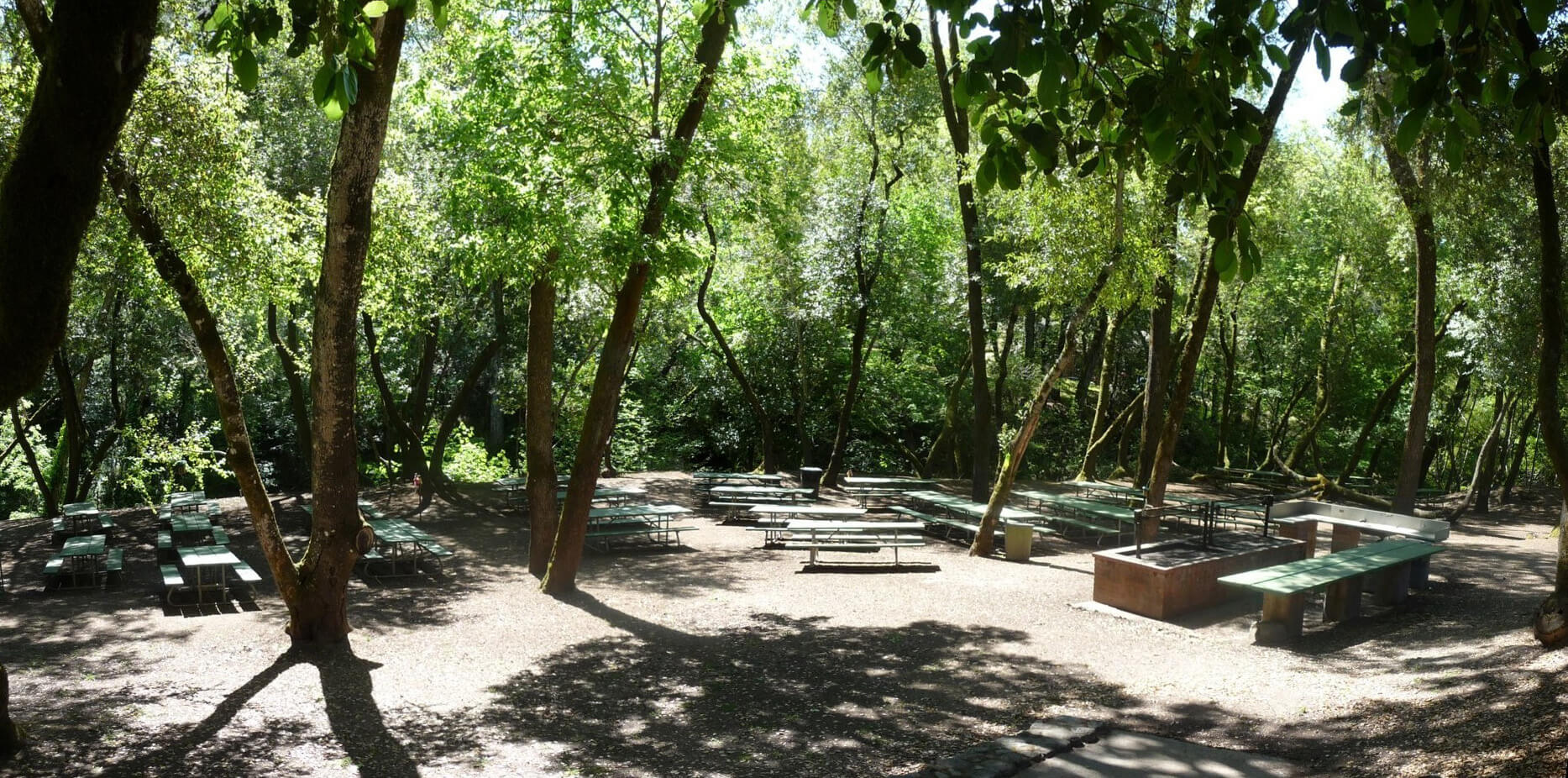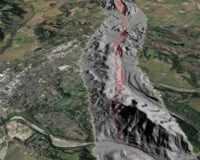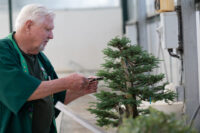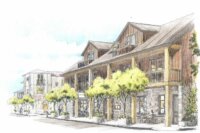A new partnership will improve creek health and foster wellness through connecting with nature.
In a public statement, the Sonoma Ecology Center announced the first major project advancing Sonoma Ecology Center’s long-term plan to improve the health of Upper Sonoma Creek has broken ground at Morton’s Warm Springs in Kenwood. Restoration will run through late summer and will result in improved wildlife habitat, increased biodiversity, and better appreciation of the creek by Morton’s visitors.
Historically, Upper Sonoma Creek, flowing from its headwaters at Sugarloaf Ridge State Park, through Kenwood to Glen Ellen, was a vibrant river corridor bordered by many seasonal and perennial wetlands and tributaries that supported significant runs of steelhead and Chinook salmon. In recent years, there have been only small runs of steelhead and occasional runs of Chinook salmon in these creeks.
“Sonoma Creek is one of the most important streams in the Bay Area because it is one of just a few that still support threatened and endangered species like steelhead and California freshwater shrimp. Our projects envisioned for Upper Sonoma Creek will help these species survive and hopefully recover by increasing habitat, and providing more water in the dry season and refuge areas in the wet season,” says Richard Dale, Executive Director of Sonoma Ecology Center.
Through landowner outreach and technical research, Sonoma Ecology Center and its partners at Environmental Science Associates identified 20 sites with restoration potential and developed conceptual plans for 16 sites based on landowner input and interest.
Shared goals and values around ecological health and connection to nature are at the core of the partnership between Sonoma Ecology Center and the managing stewards of Morton’s. The project will enhance the biodiversity of the creek by improving habitat for the endangered Central California Coast steelhead trout. A keystone species, steelhead maintain a critical balance for other species in the ecosystem. By restoring the natural creek floodplains and allowing for more water to filter down, the project will also improve water quality, increase groundwater recharge, and reduce flooding and bank erosion.
In January 2016, Morton’s was purchased by a small group of local family and friends who are reestablishing the springs as a center for multigenerational community life, wellness, and local resiliency. Regenerative ecological stewardship and watershed restoration are central to their operations of Morton’s, which features three publicly accessible geothermal mineral spring pools, shaded picnic spots, and walking paths.
“We’re thinking about the long-term health and regeneration of this place. As a hot spring, our future depends on the health of the watershed. For us, it’s about giving back what we’ve been given,” says Laurie Hobbs, a Co-Director of Morton’s Warm Springs and one of the managing stewards of the property.
Steven Lee, Sonoma Ecology Center Senior Scientist and project lead, explains “The project will remove much of the fill material placed along Sonoma Creek in the 1950s, that was used to create one of Morton’s many picnic areas. We are giving that space back to the creek, which will benefit from a restored bank and floodplain.”
Sean Wadsworth, Morton’s Warm Springs Co-Director and Managing Steward, adds that “Restoring the natural gradient to the creeks means you can see the creek from further away and creates better access for people and wildlife. We are inviting the creek to once again be front and center. Everyone downstream is going to benefit from this project. We have to think more like a watershed.”
Once completed, the site will provide needed resting and feeding habitat for steelhead fighting their way upstream to spawn. It will also result in reduced bank erosion and sediment delivery to that part of the creek since the widened channel will allow the flood waters to spread out and slow down significantly.
Several trees and boulders from the site will be used to create habitat features in the newly created floodplain area. With local restoration contractor Hanford ARC carrying out the construction phase, the project began in earnest on June 17 and is expected to be completed in large part over the next couple of months, well in advance of the upcoming rainy season.
“Substantial work has already occurred and the project is progressing well ahead of schedule. We have every expectation that this will prove a successful fisheries habitat restoration project. After the construction is completed, Sonoma Ecology Center will be carrying out the revegetation work and will monitor the progress of the restoration over the next several years,” explains Lee.
“Since Sonoma Valley is mostly privately owned over thousands of parcels, it needs all of us to be good stewards to sustain its amazing ecological legacy for the future. We are delighted to be partnering with a like-minded group of people to revitalize Morton Warm Springs and the natural heritage of the property. Partnerships like this make it possible for our scientists and restoration technicians to take critical actions for the future of Sonoma Creek and all that is connected to it,” Dale says.
The Morton’s Warm Springs Creek Restoration Project is funded by the Environmental Protection Agency’s San Francisco Bay Area Water Quality Improvement Fund, and the California Department of Fish and Wildlife’s Watershed Restoration Grant Program, which is funded by the Water Quality, Supply, and Infrastructure Improvement Act of 2014 (Proposition 1).









Be First to Comment